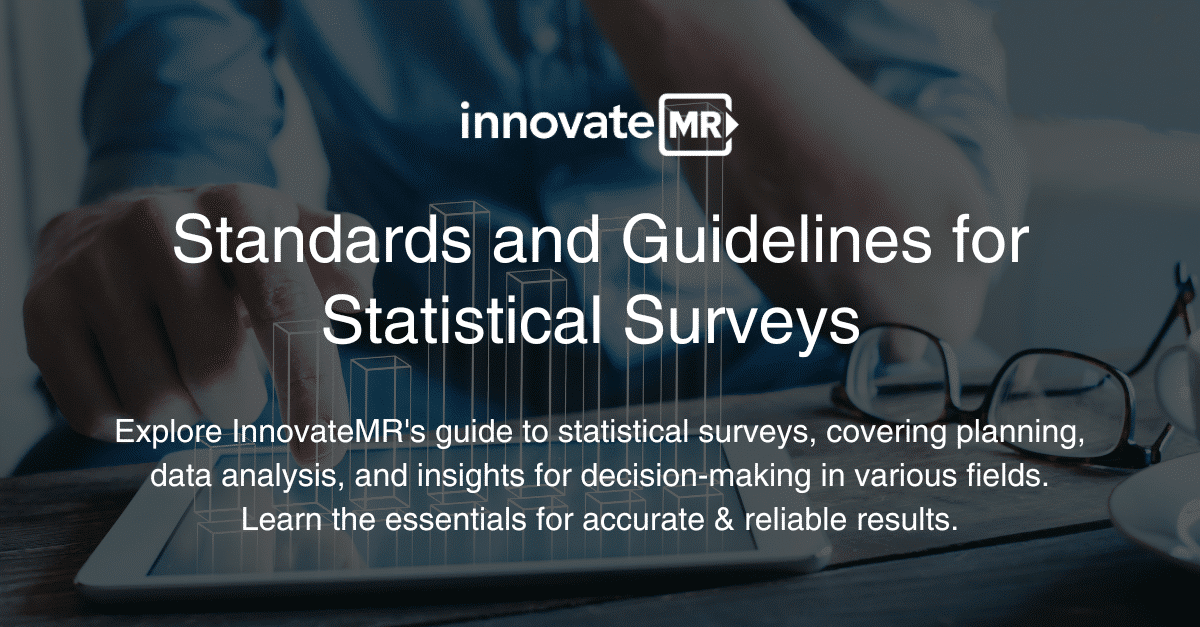
A statistical survey is a method used by researchers and statisticians to gather data about a specific population. The aim of a statistical survey is to make inferences about a broader population based on a representative sample of that population. These surveys are conducted using a variety of techniques including telephone surveys, online surveys, mail surveys, and in-person interviews. Before conducting the project, the survey planning process will more clearly identify the type of information that needs to be gathered and how to best reach the population being studied.

Defining the Target Population and Selecting a Representative Sample
The first step in survey planning is to define the target population to be studied. This could be a group of people, such as adults who purchase groceries weekly in a certain country. Once the population has been defined, a sample is selected from that population group. It’s important that the sample is representative of the population. When selecting a sample for a study, it is important to consider how well the sample represents the population of interest. To achieve this, the sample should include individuals or objects that are similar to those in the population being studied. This is an important step in survey planning because it ensures that the findings of the study are applicable to the population from which the sample was drawn within a reasonable margin of error. If the sample is not representative, then the results may be biased and may not accurately reflect the population. For example, if a study is investigating the effectiveness of a new medication for a certain condition, it would be important to select a sample of individuals who have the condition and who are similar to the broader population of individuals with the condition with an equal number of participants of a specific age, gender, and other relevant factors. This would increase the likelihood that the study findings would be applicable to the broader population.
Understanding Statistical Surveys: Planning, Sampling, and Analysis
Once the sample has been selected, researchers can use statistical methods to analyze the data. The five basic methods are mean, standard deviation, regression, hypothesis testing, and sample size determination.
1. Mean:
The mean is a measure of central tendency that represents the average value of a set of data. It is calculated by adding up all the values and dividing them by the number of values. The mean is often used to summarize data and make comparisons between different groups.
2. Standard deviation:
The standard deviation is a measure of variability that indicates how spread out the data is from the mean. A low standard deviation indicates that the data is tightly clustered around the mean, while a high standard deviation indicates that the data is more spread out. The standard deviation is often used to describe the precision of measurements or to compare the variability of different groups.
3. Regression:
Regression analysis is a statistical method used to identify relationships between variables. It is often used to determine how changes in one variable affect another, and to make predictions about future outcomes. Regression analysis can help researchers identify important predictors of an outcome variable and estimate the strength and direction of the relationship.
4. Hypothesis testing:
Hypothesis testing is a statistical method used to evaluate whether the results of a study are likely to be due to chance. Researchers formulate a null hypothesis, which assumes that there is no effect or difference between groups, and an alternative hypothesis, which proposes that there is a significant effect or difference. The data is then analyzed to determine if the null hypothesis can be rejected in favor of the alternative hypothesis.
5. Sample size determination
Sample size determination is the process of calculating the number of participants needed in a study to achieve sufficient statistical power. A larger sample size generally increases the power of a study, which is the ability to detect significant differences or effects.
Statistical surveys are used in a variety of fields including marketing, public opinion research, and social sciences. They provide valuable insights into the attitudes, behaviors, and characteristics of a population, and can help inform decision-making and policy development. Statistical surveys are an important tool for gathering data and making inferences about populations. To ensure the survey planning is conducted in a reliable and accurate manner, various standards and guidelines have been developed. Here are some of the most common ones:
- The International Statistical Institute’s Declaration of Professional Ethics: This declaration outlines the ethical principles that should guide statisticians and survey researchers during survey planning and execution. These principles include maintaining objectivity, transparency, and confidentiality, as well as ensuring that the data collected is analyzed in a responsible manner.
- The United Nations Fundamental Principles of Official Statistics: These principles provide guidelines for the collection, production, and dissemination of statistical data. They emphasize the importance of impartiality, scientific rigor, and transparency in statistical work.
- The European Statistical System’s Code of Practice: This code provides a framework for conducting statistical work in Europe. It includes principles related to the quality of statistical data, such as ensuring that data is relevant, reliable, and timely.
- The American Statistical Association’s Ethical Guidelines for Statistical Practice: These guidelines provide guidance for statisticians and survey researchers in the United States. They emphasize the importance of honesty, integrity, and confidentiality in statistical work.

- The International Organization for Standardization’s ISO 20252:2019 Market, opinion, and social research standard: This standard outlines the requirements for conducting market, opinion, and social research. It covers areas such as research design, sampling, data collection, and data processing.
In addition to these standards and guidelines, there are also various best practices and recommendations for survey planning and statistical surveys. For example, it’s important to ensure that the survey questions are clear and unbiased, and that the sample is representative of the population being studied. It’s also important to ensure that data is collected and analyzed in a way that is consistent with statistical principles and best practices. Not sure where to start with survey planning? Reach out to our consulting team.
In conclusion, a statistical survey is a method of collecting data from a sample of a population in order to draw conclusions and make inferences about the population as a whole. It involves careful survey planning and careful selection of representative sample, as well as the use of statistical methods to analyze the data. Statistical surveys are widely used in research and can provide valuable insights into a variety of fields. Overall, adhering to these standards and guidelines can help ensure that statistical surveys are conducted in a reliable and accurate manner, and that the resulting data is useful for decision-making and policy development.
About InnovateMR – InnovateMR is a full-service sampling and ResTech company that delivers faster, quality insights from business and consumer audiences utilizing cutting-edge technologies to support agile research. As industry pioneers, InnovateMR provides world-class end-to-end survey programming, targeted international sampling, qualitative and quantitative insights, and customized consultation services to support informed, data-driven strategies, and identify growth opportunities. Known for their celebrated status in customer service and results, InnovateMR combines boutique-level service with extensive global reach to achieve partner success.


